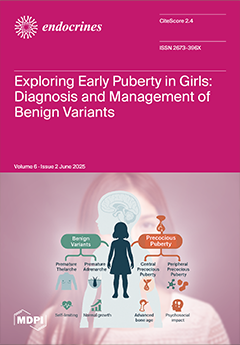Background/Objectives: Understanding sex-based differences in both the pathophysiology and clinical presentation of diseases is necessary to improve health care towards precision medicine. The endocrine system is deeply involved in human health, and endocrine diseases may be influenced by steroidal hormone exposure. Thyroid nodular disease and differentiated thyroid cancer, in particular, show a high prevalence in the female sex; however, little is known about sex-related differences in risk factors and clinical presentation. This study aims to assess whether morphological differences, which can be detected by ultrasound examination, can be related to sex in order to refine diagnostic approaches and oncological risk classification.
Methods: A retrospective observational study on 1355 ultrasound images of thyroid nodules obtained from 2017 to 2020 at a single university center was conducted. The images were reviewed by a single observer blinded to the patient’s sex and the cytological nature of the nodules. The qualitative description, size, anatomical location and oncological risk classification were assessed.
Results: A taller-than-wide shape (anteroposterior/craniocaudal axis ratio > 1) was found to be more frequent in men than in women (6.7% vs. 3.6%,
p = 0.027); the nodular volume was significantly larger in males (
p << 0.01) than in females. Significant tropism for the upper lobe and isthmus was described in women (26% vs. 16.5%,
p = 0.011) and for medium–lower thyroid lobes in men (83.5% vs. 73.8%,
p = 0.011). Background thyroiditis was more common in women, while the number of cytological diagnoses of malignant or likely malignant nodules was higher than expected in men (9% vs. 6%,
p = 0.01).
Conclusions: Thyroid nodules show different distributions, in terms of a larger volume, more frequent taller-than-wide shape and lobular caudal location, in men vs. women. These results should be confirmed by further investigations, and the underlying mechanism should be clarified. However, our explorative research is of interest due to its novelty and possible future clinical implications.
Full article




